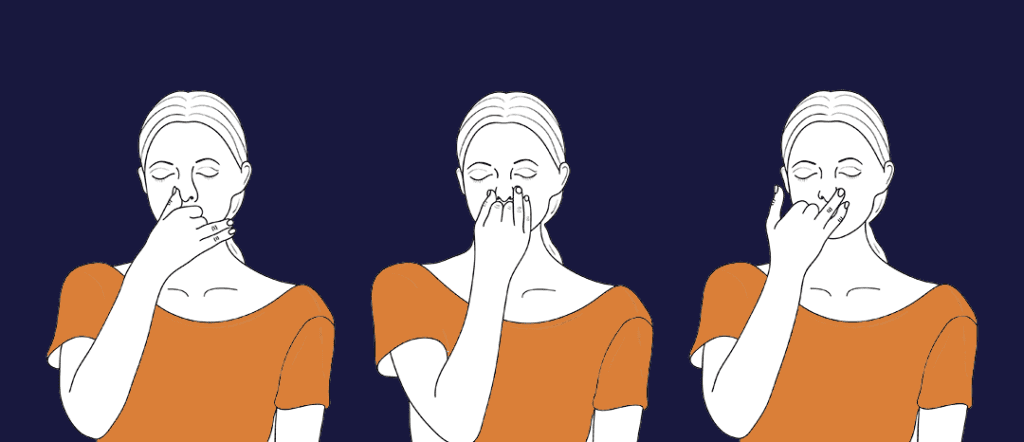Breathwork: Attention + Energy = More Life Now
Breath isn't a choice. It's a biological imperative. It's the first thing you do when you arrive here on Earth. And it's the last thing you do before leaving. When you take that last one, that's it. To the best of our knowledge, that's the end of “you.”
When breath stops, life stops. No breath equals no life. and that makes breath a very, very big deal.
Andrew Smart, Breathwork and Mediation Guide
What is Breathwork?
Though breathwork has roots in Eastern practices like yoga, Tai Chi, and Buddhism, we owe thanks to the consciousness-raising era of the 1960s and 70s for most of the breathwork therapies used today.
During breathwork the practitioner brings their focus and conscious awareness to their inhales and exhales and intentionally change their breathing pattern.
People who practice breathwork describe:
- feeling tingling sensations throughout their body
- feelings of clarity & alertness
- a sense of an increased mind-body connection
- and even emotional purging
There are many forms of breathwork, each with its own unique methods of breathing in a conscious and systematic way for healing purposes and to improve mental, physical, and spiritual health and well-being.

Is Breathwork a Meditation Technique?
Meditation is a practice where an individual uses a technique – such as mindfulness, or focusing the mind on a particular object, thought, or activity – to train attention and awareness, and achieve a mentally clear and emotionally calm and stable state.
Meditation is an extremely useful form of self-reflection and with steady practice over a period of time, will beneficially shift our perspective.
Similarly, the practice of breathwork gives the brain's executive functioning something to focus on, so you can bypass the mental level of consciousness. Breathwork, though, can be easier to drop into than meditation when you are seeking immediate feedback. and a deeper state of consciousness.
Every relaxation, calming, or meditation technique relies on breathing, which may be the lowest common denominator in all the approaches to calming the body and mind.
Who is Breathwork For?
Breathwork is safe*, enjoyable and worth a try for most people who are interested in achieving a greater sense of self-awareness and capacity for self-healing.
People who are interested in nurturing overall mental, physical, and spiritual well-being will want to give breathwork a go. Breathwork is also nourishing for someone who is doing well and feels ready for the next opening—the next layer of love, peace, gratitude, clarity, connection, and insights.
Breathwork might be for you if you are:
- looking for a major breakthrough
- an overthinker or chronically overstimulated
- overworked or overstressed
- looking to take your yoga practice to the next level
- someone who has resentments to shed
- prone to anxiety or depression
- a spiritual seeker
Tips for Getting Started
There are little-to-no rules when it comes to establishing your own breathwork routine. You can practice with a teacher or in a group, tune into a digital session, or guide yourself through a breath sequence from home.
Be discerning about your own state. If you feel any discomfort or lightheadedness, stop immediately and return to normal breathing. Consult an instructor for guidance and supervision.
Don't force or restrict your breath. Take it slow and be gentle with yourself. The more you practice, the longer you’ll be able to perform the exercises, and eventually, you’ll be able to use more of your lung capacity.
Patience and practice. Engage in breathwork with loving care and awareness. As needed, return your focus to the journey, not the destination.
*Check with your doctor before you start a breathwork practice if you have a history of cardiovascular issues, including high blood pressure, or are currently taking antipsychotic medications.
Two Simple Breathwork Exercises
Alternate-Nostril Breathing: try this whenever you want to balance the brain, improve your circulation, and calm a racing mind.

- Take a comfortable seat, spine straight. Place your left hand in your lap.
- The tips of your right index and middle fingers will rest at the base of your right thumb. Your right thumb will close off your right nostril, alternating with your ring finger closing off your left nostril.
- Close off your right nostril with your thumb and slowly inhale through your left nostril.
- Close off your left nostril with your ring finger and pause.
- Remove your thumb from your right nostril and slowly exhale through your right nostril. Pause.
- Inhale slowly through your right nostril.
- Close off your right nostril with your thumb and pause.
- Remove your ring finger from your left nostril and slowly exhale through your left nostril. Pause.
- Inhale slowly through your left nostril.
- Repeat steps four through nine.
Box Breathing: try this when you need to reduce stress, improve focus, and get grounded.
- Sit up straight in a comfortable spot. Close your eyes and relax your shoulders.
- Inhale through your nose as you silently count: one, two, three, four.
- Hold your breath at the top (full lungs) as you count: one, two, three, four.
- Exhale through the nose as you silently count: one, two, three, four.
- Hold your breath at the bottom (empty lungs) as you silently count: one, two, three, four.
- Repeat steps two through six until you feel grounded, with a sense of balance, equanimity, and calm.
- With experience, you can experiment with longer counts and holds. Keep each side of the box equal (inhale, hold, exhale, hold).
Sources:
- Breathwork by Andrew Smart
- https://www.healthline.com/health/breathwork
- https://www.mindbodygreen.com/articles/what-breathwork-is
- https://www.goodtherapy.org/learn-about-therapy/types/breathwork
- https://www.scientificamerican.com/article/proper-breathing-brings-better-health/
- https://www.parsleyhealth.com/blog/breathwork-does-it-work/
Stay connected for free resources to expand your health and vitality with non-allopathic remedies and natural CBD solutions.

